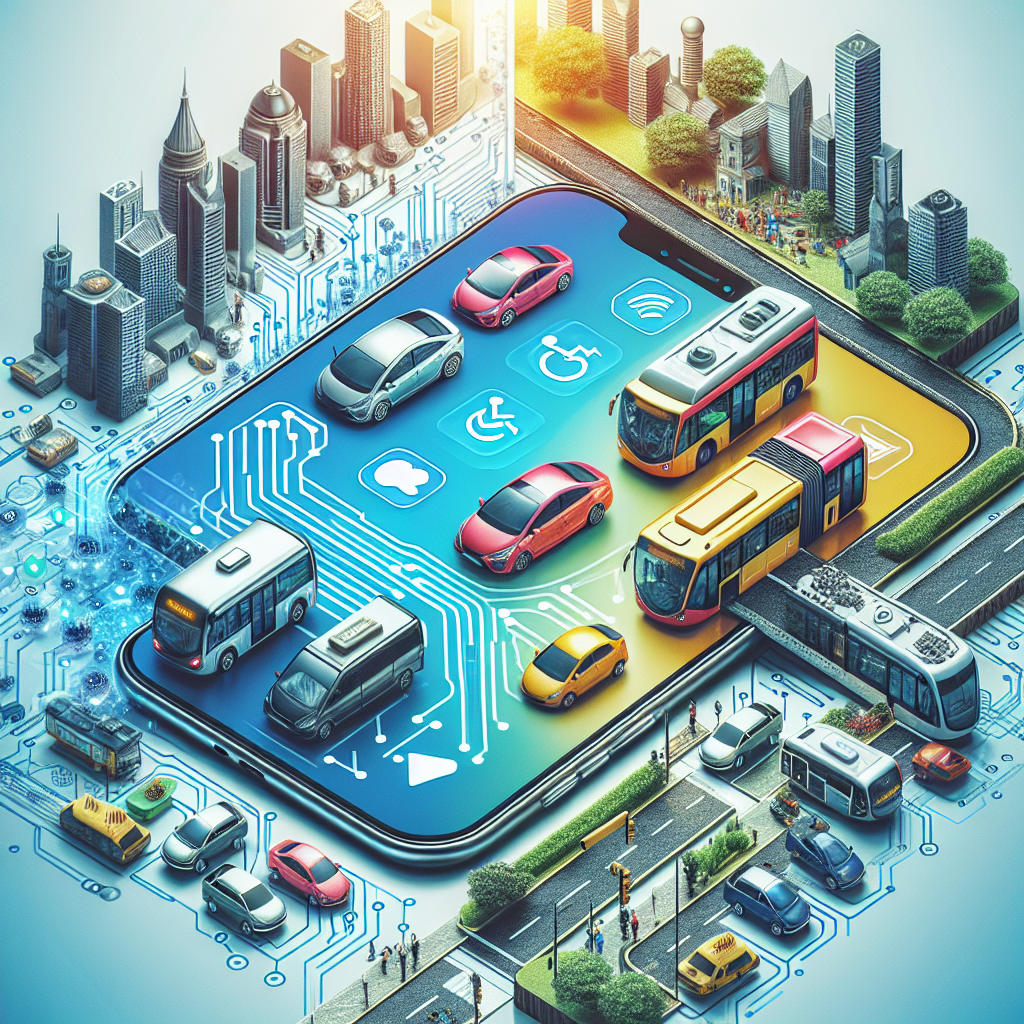The Impact of Ride-Sharing Apps on Public Transportation Systems
In the past decade, ride-sharing apps such as Uber and Lyft have transformed urban mobility, offering convenient, reliable, and often cost-effective alternatives to traditional public transportation systems. These platforms have not only changed the way people commute but also sparked a debate on their impact on cities’ public transit networks. This article explores the multifaceted effects of ride-sharing apps on public transportation systems, delving into both the challenges and opportunities they present.
A New Era of Urban Mobility
Ride-sharing apps have ushered in a new era of urban mobility, characterized by the rise of the ‘sharing economy’. By leveraging technology to connect drivers with passengers directly, these platforms have made personal transportation services more accessible. Users can summon a ride with a few taps on their smartphones, a level of convenience that public transportation systems often struggle to match.
The Impact on Public Transportation Ridership
One of the most immediate concerns is the impact of ride-sharing services on public transportation ridership. Studies have shown mixed results, varying significantly from one city to another. In some urban areas, ride-sharing complements public transit by serving as a first-mile/last-mile solution, helping passengers reach transit hubs that are otherwise inaccessible. However, in other cities, ride-sharing competes directly with public transportation, leading to a decline in ridership. This competition primarily affects off-peak hours and weekend services, when public transportation runs less frequently, and ride-sharing becomes a more attractive option.
Financial Implications for Public Transit
The decline in ridership can have significant financial implications for public transportation systems, which are often subsidized by government funds. Reduced fare revenue may lead to budget shortfalls, impacting the ability of transit agencies to maintain and improve services. This could create a vicious cycle, where deteriorating public transit services push more people towards ride-sharing apps, further decreasing ridership and fare revenue.
Congestion and Environmental Concerns
Ride-sharing apps have also been criticized for contributing to urban congestion and environmental degradation. The convenience of these services can encourage people to opt for ride-sharing over more sustainable modes of transportation, such as walking, cycling, or using public transit. Moreover, the phenomenon of ‘deadheading’, where ride-sharing vehicles travel empty while waiting for ride requests, adds unnecessary vehicle miles traveled (VMT), exacerbating traffic congestion and air pollution.
Opportunities for Integration and Collaboration
Despite these challenges, ride-sharing apps also present opportunities for enhancing urban mobility through integration and collaboration with public transportation systems. Some cities have started experimenting with partnerships between public transit agencies and ride-sharing companies, aiming to create a more cohesive and efficient urban transportation ecosystem. These initiatives include:
– Integrating Ride-Sharing with Public Transit Apps: Allowing users to plan trips that combine public transportation with ride-sharing services, providing a seamless travel experience.
– Subsidizing Ride-Sharing for First-Mile/Last-Mile Connectivity: Offering subsidized ride-sharing rides to or from transit stations to encourage public transit use.
– Complementing Public Transit in Underserved Areas: Utilizing ride-sharing services to provide on-demand transportation in areas with limited public transit access.
A Path Forward
The relationship between ride-sharing apps and public transportation systems is complex, with potential for both conflict and collaboration. To harness the benefits of ride-sharing while mitigating its negative impacts, it is crucial for policymakers, transit agencies, and ride-sharing companies to work together. Strategies such as data sharing, regulatory frameworks that support fair competition, and initiatives that integrate ride-sharing with public transit can help create more sustainable and efficient urban transportation landscapes.
FAQs on Ride-Sharing Apps and Public Transportation
Q: Do ride-sharing apps always decrease public transportation ridership?
A: Not necessarily. The impact of ride-sharing on public transportation ridership varies by city and depends on several factors, including the quality and coverage of public transit services, pricing, and urban layout.
Q: Can ride-sharing be environmentally friendly?
A: Ride-sharing has the potential to be more environmentally friendly than private car ownership if it reduces the total number of cars on the road and complements more sustainable transportation options. However, the current trend of increased vehicle miles traveled due to ride-sharing poses challenges to its environmental benefits.
Q: Are there examples of successful collaborations between ride-sharing apps and public transit agencies?
A: Yes, several cities around the world have launched pilot programs and partnerships integrating ride-sharing services with public transit. These initiatives aim to enhance first-mile/last-mile connectivity, improve accessibility, and reduce congestion.
Q: How can cities balance the benefits of ride-sharing with the need to support public transportation?
A: Cities can balance the benefits of ride-sharing with the support for public transportation by implementing regulatory frameworks that encourage collaboration between ride-sharing companies and public transit agencies, investing in public transportation infrastructure, and promoting multimodal transportation options.
Q: What role do policymakers play in shaping the future of urban mobility?
A: Policymakers play a critical role in shaping the future of urban mobility by setting regulations that ensure fair competition, protect consumer interests, and promote sustainable transportation. They can also facilitate partnerships between different stakeholders in the transportation ecosystem to create integrated and efficient urban mobility solutions.
In conclusion, while ride-sharing apps have undoubtedly transformed urban mobility, their impact on public transportation systems is nuanced. By fostering collaboration and leveraging technology, it is possible to create a synergistic relationship between ride-sharing and public transportation, paving the way for more sustainable, accessible, and efficient urban transportation networks.

